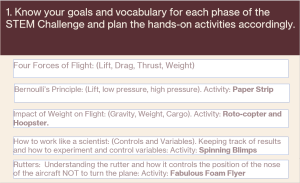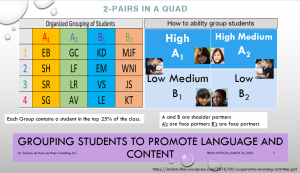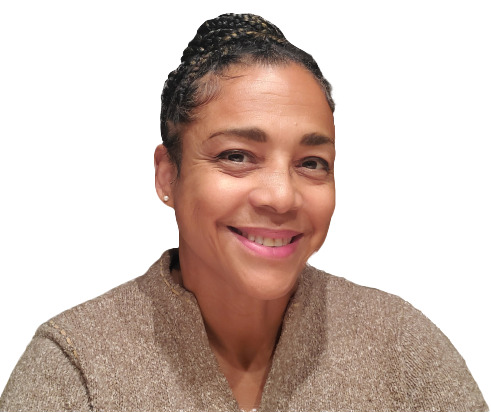STEM and ELT: What I Learned From My TESOL 2022 Participants
The TESOL 2022 Convention in Pittsburgh was absolutely outstanding! The sessions, presenters, and keynotes provided a plethora of information, strategies, and insights into many aspects of language development, diversity, equity, and inclusion challenges and successes for English learners (ELs). But the greatest takeaways personally for me were from the attendees at my sessions. Their questions, comments, excitement, and engagement let me know what resonated with them as well as the areas in which they needed advice and strategies.
Following are three “Big Moments” gathered from the attendees, which I noted from questions and tweets on Twitter. Yes! There were tweets and retweets. How exciting it was seeing that the strategies provided were valuable to attendees in their endeavor to provide ELs with what they need in learning STEM. Here they are:
1. The Brain Wants to Make Sense Before the Details
This one hit home with the attendees because it provides a new way to look at vocabulary and how lessons are structured and taught. Too often we “content dump” on the students. By content dump, I mean that we just give them an overload of information at one time and do not allow them the opportunity to process it in a way that makes sense to them so that they can remember (retrieve) it later. I provided the attendees with examples of how to teach vocabulary and how to plan a lesson without content dumping.
Lesson Planning example for the STEM Challenge: Make a paper airplane that can carry a cargo and glide more than ten feet (not be hurled, but actually glide).
Review the unit (challenge in this example) and determine the goals, vocabulary, and hands-on activity for each phase of the STEM Challenge.
Why? This allows the teacher to plan how to break down the information into chunks in order for the students to begin the process of sense making their way. This is important because the brain can only handle five to seven bits of information in working memory at a time, which includes translating between languages. Therefore, the more a student can make sense of the information, the more working memory available to learn other things. Below, you will see how I broke the STEM Challenge into chunks. Notice how I listed the targeted vocabulary and the activity that will provide the students with an opportunity to make the proper connections between the outcome of the activity and the vocabulary to be taught.

2. Grouping of Students: 2 Pairs in a Quad
This strategy took the room by storm because it provides the teacher with a strategy on how to teach in a classroom with many ELs at different levels of proficiency while still maintaining rigor. Teachers play a key role in grouping ELs and structuring activities so that the ELs have regular opportunities to share their ideas and funds of knowledge and to practice reading, writing, listening, and speaking the language.
Why? The grouping of students between proficient/fluent speakers and ELs creates an environment where the ELs are seen as competent community members and contributors in the classroom even when their English is not perfect! Or, as we say in education, proficient. Below is an example of how a teacher can group students into what I call communities. This structure provides the students with a team in which to collaborate and ask questions in a small group setting as opposed to a full classroom, which can be intimidating and uncomfortable to the EL.
The colorful table on the left in the picture below are the groups with student initials. The chart to its right represents the two pairs in the quad for each group.

3. Changing the Focus From the Input to the Output
Another topic that created dialogue and questions was on retrieval practice. We, as educators, tend to be focused on getting information “in” with a hope that it sticks instead of focusing on what the student may already know and getting that information “out.” In education, we continue to have this archaic belief that the students are empty slates and that they must wait for us to teach them instead of seeing students as individuals who enter our classrooms with knowledge and experiences. Instead, we should be focusing on what information the students may already know on a given topic and getting that information “out” first.
Why? This process of getting the students’ information out is called retrieval practice. According to retrivalpractice.org, the process of retrieval practice is a powerful learning strategy for improving academic performance without more technology, money, or class time. Retrieval practice is a more potent learning strategy that other techniques, such as lecturing, rereading, or taking notes, and it improves students’ understanding and retention of classroom material.
TESOL 2022 was definitely a wonderful experience, and I truly enjoyed being face to face and having those conversations that are not possible via remote instruction. Did you attend the conference? If so, what did you enjoy the most? Please share your experience.

